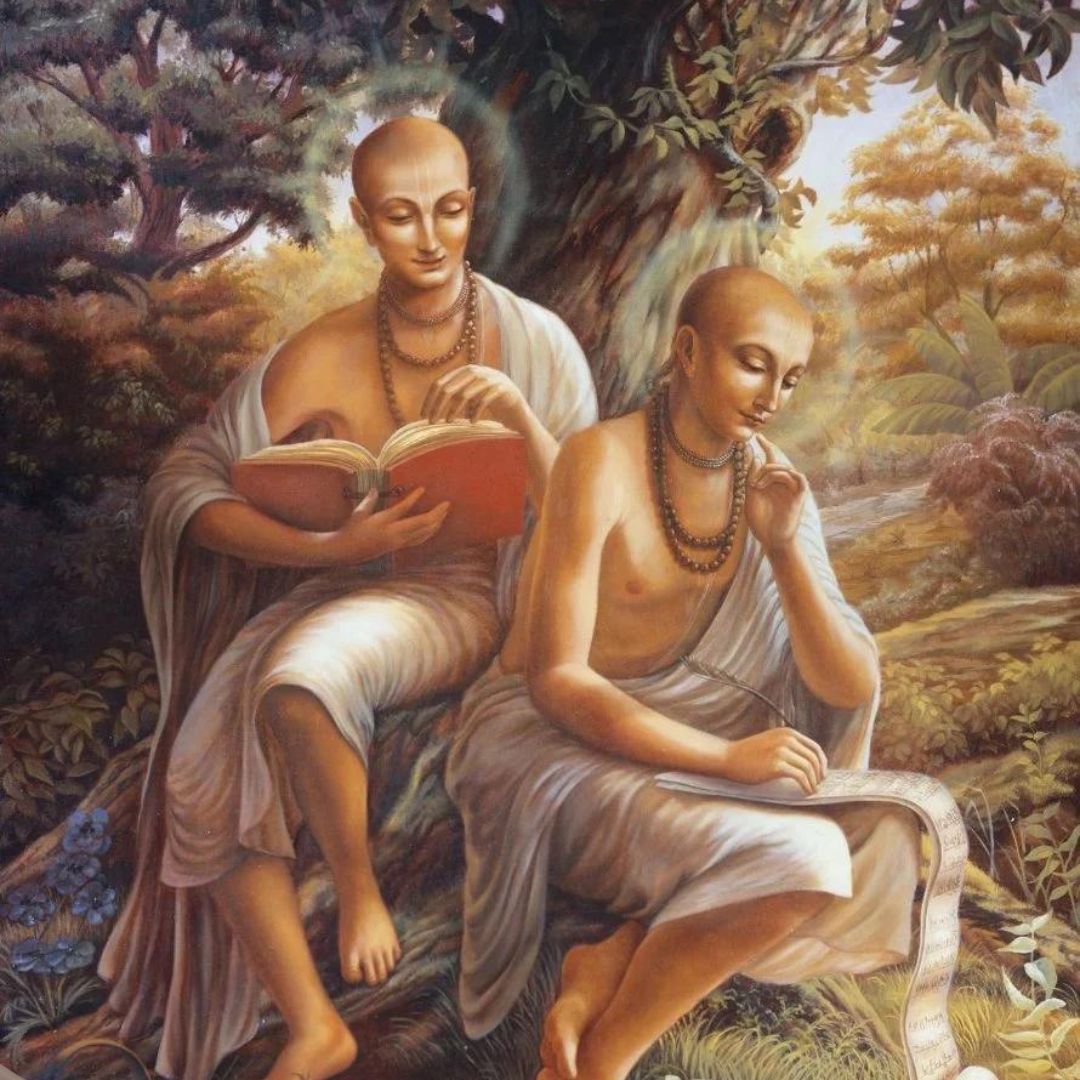Anyone can become a sadhu, or spiritual teacher, by following the example set by sadhus. Two famous sadhus who taught by example and left a wealth of literature started as apparently worldly men.
Dabir and Sakar lived in 15th-century Bengal. Both were well educated, wealthy, and influential. Both spoke several languages, and Dabir was Bengal’s chief minister, Sakar its minister of finance.
Though both Dabir and Sakar were dutiful, well loved, and without material needs, neither was satisfied. They yearned to know the ultimate goal of life. Then they heard of a traveling monk named Chaitanya who happened to be camped nearby, in Ramakeli. Chaitanya, known as an avatar of the Supreme, was effulgent and charismatic yet renowned for His lack of worldly attachments. Wherever He traveled, He held public sessions of chanting divine mantras in which He and the audience danced in spiritual rapture.
Chaitanya’s daily events attracted thousands, and Dabir and Sakar wanted to meet Him. They wrote Him a letter requesting an audience, but after not receiving a reply for some days, they decided to just go to His encampment, which was nearby. One evening, disguised as commoners, they slipped away from their stately homes, went to the festival, and there saw Chaitanya in all His splendor. Presenting themselves as students, they asked for His tutelage, and Chaitanya greeted the two brothers as old friends and at once accepted them as His disciples, with the spiritual names Sanatana Goswami (for Dabir) and Rupa Goswami (for Sakar), respectively.
After being accepted as Chaitanya’s students, Rupa and Sanatana return to their jobs. Both, however, were eager to retire at once to join Chaitanya and embrace the life of spiritual practitioners. Rupa was able to retire from his government post. He left his home and took lessons from Chaitanya at Allahabad, a pilgrimage town on the bank of the Ganges River. For ten days, Chaitanya instructed him in the principles of bhakti-yoga, devotional service to Krishna.
Sanatana had difficulty breaking away from his government responsibilities. When his employer, Nawab Hussain Shah, the king of Bengal, found out that he intended to leave his government duties to become a sadhu, he imprisoned Sanatana, telling him, “Either do your duty or stay in jail.” Rupa had left Sanatana a stock of gold coins in case of just such an emergency, however, and Sanatana bribed the jailkeeper, escaped, made the long, clandestine trek to Varanasi, where he met Chaitanya, and for the next two months stayed with Chaitanya to learn the science of devotional service.
With a submissive attitude he asked the following questions: “Who am I? Why am I suffering? How can I attain the ultimate benefit of life?” And although it took two months, Chaitanya gave detailed, precise answers.
Rupa Goswami and Sanatana Goswami set a standard for all those who wish to advance in spiritual life. The path opens with relevant questions, and no matter who we are or how learned we may be, we must ask questions in the mood of a novice to begin our journey.
Ask good questions, get good answers. From sadhus, we can get answers that help us achieve our full potential. How many opportunities do we get to ask such questions during our short, busy lives? Not many. The Bhagavad-gita recommends, “Approach the wise in a humble mood. Serve them, and then ask them how to perfect your life.”
In his commentary to Srimad-Bhagavatam Srila Prabhupada writes, “The real business of life is to ask, ‘Who am I?’ and to understand oneself. One should understand the position of the living entity in this material world and understand how to return home, back to Godhead.”
Rupa Goswami and Sanatana Goswami were Chaitanya’s foremost disciples. After inquiring and then learning from Him, they became world-renowned teachers and authors—sadhus—writing dozens of books on the science of bhakti-yoga and establishing spiritual centers that are visited even today by millions. Their activities are recounted in Śrī Caitanya-caritāmṛta, a post-graduate yoga wisdom text that contains the history of the life and teachings of Chaitanya, who, as mentioned by the author and by many other historians, was not an ordinary monk, but an emissary from the spiritual world.
Want to learn more? Sign up to receive updates on my upcoming book, The Four Questions, here: www.thefourquestionsbook.com.
0
